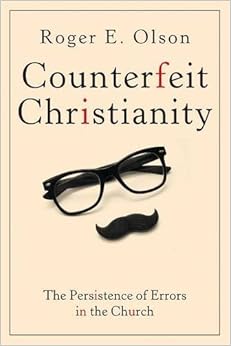The mother of orthodoxy, says Roger Olson in his book Counterfeit Christianity: The Persistence of Errors in the Church, is heresy in that it was often a heresy (or a suspicious idea at the time) that provoked Christian theologians to explain what was truly orthodox. Let us then say that it worked like this, which is a little more nuanced and a sketch Olson would no doubt approve:
First, the story that comes to completion in Jesus and his death and resurrection and ascension. Second, the apostolic faith moves from Jerusalem into the Roman world. Third, someone in the church at some level challenges what the apostles have been teaching — what is found in what we now call the New Testament. Fourth, Christian theologians — from the apostles to today — respond by articulating what is most consistent with the gospel and thus with what has been believed. This articulation is called orthodoxy. The articulations often enough are provoked by something that was soon called heresy.
This orthodoxy is rooted unequivocally in the gospel about Jesus (1 Cor 15:3-8) but is unfolded over time and in response to new issues, and this responsiveness occurs already at the time of the apostles (e.g., Colossians or 1 John). It did not arise with Constantine and Nicea. That's such a bonehead piece of history that is somehow credible to so many today — or that is something folks today want to believe as true. It’s not.
___
The entire post can be read here.
A Weblog Dedicated to the Discussion of the Christian Faith and 21st Century Life
___
I do not seek to understand that I may believe, but I believe in order to understand. For this also I believe, –that unless I believed, I should not understand.-- St. Anselm of Canterbury (1033-1109)
Subscribe to:
Post Comments (Atom)

No comments:
Post a Comment